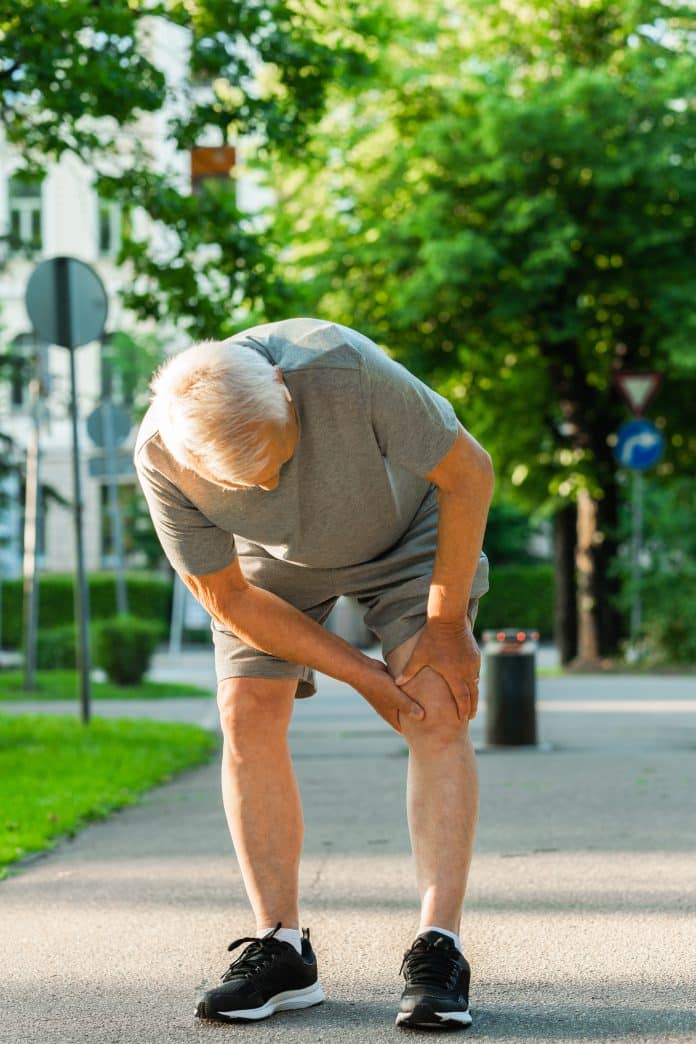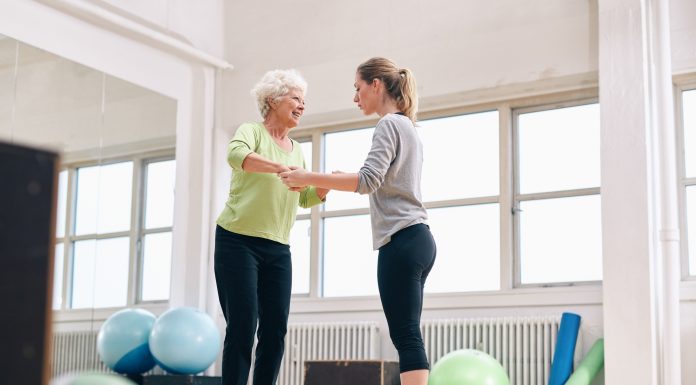Pickleball, a rapidly growing sport, has become immensely popular among seniors for its accessibility, social aspect, and health benefits. As more seniors take to the courts, it’s essential to understand the potential risks associated with the sport, particularly knee injuries. In this comprehensive guide, we will explore the common knee injuries that senior pickleball players may encounter, and we’ll provide valuable information on how to recognize, prevent, and treat these injuries.
Understanding the Anatomy of the Knee
Before delving into knee injuries, it’s crucial to have a basic understanding of the knee’s anatomy. The knee is a complex joint of bones, ligaments, tendons, and cartilage. It plays a pivotal role in various pickleball movements, including running, pivoting, and quick direction changes.
The primary components of the knee joint include:
- Femur (thigh bone)
- Tibia (shin bone)
- Patella (kneecap)
- Ligaments (ACL, MCL, LCL, PCL)
- Meniscus (cartilage)
Understanding these structures is essential in recognizing and addressing knee injuries.
Signs and Symptoms of Knee Injuries
Recognizing knee injuries in senior pickleball players starts with an awareness of the common signs and symptoms. If you or a fellow player experience any of the following, it’s essential to take them seriously and seek appropriate evaluation and care:
A. Pain as a Primary Indicator
- Persistent, localized pain in the knee, especially during or after pickleball matches.
- Discomfort that worsens with movement, running, or bending the knee.
B. Swelling and Inflammation
- Visible swelling around the knee joint, often accompanied by warmth and redness.
- Swelling that may occur immediately after an injury or gradually over time.
C. Limited Range of Motion
- Difficulty fully extending or bending the knee.
- Feeling like the knee is “locked” or restricted in its movement.
D. Popping or Clicking Sensations
- Audible or palpable popping or clicking sounds within the knee joint during movement.
- These sensations may be accompanied by pain or discomfort.
E. Instability or a Feeling of Giving Way
- A sensation that the knee is unstable or may give way during physical activity.
- Difficulty maintaining balance or control while playing pickleball.
Recognizing these signs and symptoms promptly can lead to early intervention and better outcomes.
Common Knee Injuries in Pickleball
Senior pickleball players are susceptible to several common knee injuries, often related to the repetitive movements and agility required in the sport. Pickleball knee pain is a prevalent issue that can affect players of all levels, and it’s essential to recognize the signs and symptoms associated with this discomfort.
Here are some of the prevalent knee injuries:
A. Tendonitis and Overuse Injuries
- Patellar Tendonitis (Jumper’s Knee)
- Patellar tendonitis is characterized by pain in the front of the knee, just below the kneecap.
- It typically results from repetitive jumping and running, common in pickleball.
- IT Band Syndrome
- IT (Iliotibial) band syndrome causes pain on the outer side of the knee.
- It occurs due to friction between the IT band and the knee joint during repetitive lateral movements.
B. Ligament Injuries
- ACL (Anterior Cruciate Ligament) Injury
- ACL injuries often involve a sudden twisting or hyperextension of the knee.
- They can result in severe pain, swelling, and instability.
- MCL (Medial Collateral Ligament) Injury
- MCL injuries affect the ligament on the inner side of the knee.
- These injuries can lead to pain, swelling, and difficulty with side-to-side movements.
C. Meniscus Tears
The meniscus is a wedge-shaped cartilage that acts as a cushion in the knee joint.
- Tears in the meniscus can occur due to twisting or sudden movements and result in knee pain, swelling, and locking.
D. Osteoarthritis
- Osteoarthritis is the gradual wearing down of the protective cartilage in the knee joint.
- It can lead to chronic knee pain, stiffness, and reduced mobility, often exacerbated by pickleball’s repetitive motions.
Recognizing the specific type of knee injury is essential for proper diagnosis and treatment.
Risk Factors for Knee Injuries in Senior Pickleball Players
Several factors contribute to the risk of knee injuries in senior pickleball players:
A. Age-Related Factors
- As we age, our joints’ natural wear and tear can increase susceptibility to injuries.
- Reduced muscle mass and flexibility can also play a role.
B. Overuse and Improper Technique
- Repetitive movements, such as frequent lunging or pivoting, can strain the knee joint.
- Improper form and technique can exacerbate this strain.
C. Lack of Warm-Up and Conditioning
- Inadequate warm-up before play can increase the risk of muscle and joint injuries.
- A lack of conditioning and strength training can leave the knees vulnerable.
D. Previous Knee Injuries
- A history of prior knee injuries or surgeries can weaken the knee and make it more susceptible to future problems.
- Senior players with a previous injury should take extra precautions.
E. Equipment and Footwear Considerations
- Ill-fitting shoes or inadequate support from footwear can contribute to knee problems.
- Inadequate shock absorption from shoes may also increase the risk of injury.
Understanding these risk factors can help senior pickleball players proactively prevent knee injuries.
Importance of Early Recognition
Recognizing knee injuries early is crucial for several reasons:
A. Preventing the Progression of Injuries
- Early intervention can prevent minor injuries from becoming chronic or severe.
- Timely recognition and treatment can halt the worsening of the condition.
B. Avoiding Complications and Chronic Pain
- Prompt treatment can prevent complications like joint instability or cartilage damage.
- It can also help seniors avoid chronic knee pain that interferes with daily life.
C. Promoting Faster Recovery and Return to Play
- Senior pickleball players who recognize injuries early are more likely to recover faster and return to the court sooner.
- A shorter recovery period minimizes disruptions to their active lifestyle.
Self-Assessment for Knee Injuries
While professional evaluation is essential, there are steps seniors can take to assess knee discomfort or pain on their own.
Self-assessment involves:
A. Recognizing Pain Patterns
- Pay attention to when knee pain occurs – during play, after activity, or at rest.
- Note any specific movements or actions that trigger the pain.
B. Tracking Swelling and Inflammation
- Regularly check for visible swelling, warmth, or redness around the knee joint.
- Monitor changes in swelling over time.
C. Assessing Range of Motion
- Gently attempt to bend and straighten the knee to assess any limitations.
- Compare the range of motion to your other knee.
D. Noting Audible or Palpable Sensations
- Be aware of any popping, clicking, or grinding sensations within the knee.
- These sensations may be accompanied by pain.
E. Evaluating Stability and Balance
- Assess your ability to maintain balance and stability on one leg.Note if you experience any instability or feelings of the knee giving way.
- While self-assessment can provide valuable insights, professional evaluation for suspected injuries is optional.
Seeking Professional Evaluation
When knee discomfort or pain persists or worsens, it is imperative to seek professional evaluation. Healthcare providers, such as orthopedic specialists or sports medicine doctors, play a crucial role in diagnosing knee injuries.
They may recommend diagnostic tests such as X-rays, MRIs, or physical examinations to assess the extent of the injury.
Once a diagnosis is made, healthcare professionals can guide treatment options and develop a tailored plan to address the injury effectively.
Treatment and Management Options
The treatment and management of knee injuries in senior pickleball players vary based on the type and severity of the injury.
Common treatment options include:
Rest and Ice as Initial Treatment Measures
A. Rest and Ice as Initial Treatment Measures
- Resting the injured knee to allow it to heal.
- Applying ice to reduce pain and swelling. Physical Therapy and Rehabilitation Exercises
- Participating in physical therapy to strengthen the knee and improve mobility.
- Engaging in targeted exercises to address the specific injury.
B. Bracing and Support for Injured Knees
- Wearing knee braces or supports to provide stability and reduce strain on the injured area.
- Customized bracing for severe injuries or following surgery.
C. Medications and Injections for Pain and Inflammation
- Over-the-counter or prescription medications to manage pain and inflammation.
- Corticosteroid injections for severe pain and swelling.
D. Surgical Options for Severe Injuries
- Surgical intervention may be necessary in cases of significant damage or instability.
- Surgical procedures can range from arthroscopy to ligament reconstruction.
The appropriate treatment plan will be determined by healthcare professionals and tailored to the specific needs of the individual.
Preventing Knee Injuries in Pickleball
Preventing knee injuries is paramount for senior pickleball players to continue enjoying the sport safely.
Here are several strategies for injury prevention:
A. Warm-Up and Stretching Routines
- Engage in a proper warm-up routine before playing pickleball to prepare the muscles and joints.
- Incorporate dynamic stretching to improve flexibility and mobility.
B. Strengthening Exercises for Knee Stability
- Include knee exercises for pickleball that target the muscles around the knee joint.
- Focus on building strength in the quadriceps, hamstrings, and calf muscles.
C. Proper Technique and Form During Play
- Ensure proper form when executing pickleball movements, including lunges and pivots.
- Practice good posture and alignment to reduce strain on the knees.
D. Footwear and Equipment Considerations
- Invest in appropriate pickleball shoes that provide adequate support and cushioning.
- Consider using knee pads for additional protection during play.
E. Knowing Your Limits and Pacing Yourself
Be aware of your physical limitations and adjust your play accordingly.
- Avoid overexertion and take breaks when needed.
- Implementing these preventive measures can significantly reduce the risk of knee injuries while playing pickleball.
Tips for Returning to Pickleball After a Knee Injury
Returning to the sport can be a cautious but achievable process for senior pickleball players recovering from knee injuries. Here are some tips to guide your return:
A. Gradual Return to Play
- Begin with gentle, low-intensity activities to test your knee’s response.
- Gradually increase the intensity and duration of your play as your knee strengthens.
B. Monitoring and Managing Discomfort
- Pay close attention to any discomfort or pain during play.
- If you experience pain, reduce your activity level and seek advice from a healthcare provider.
C. Seeking Ongoing Guidance from Healthcare Professionals
- Continue to consult with healthcare professionals throughout your recovery.
- They can guide on when it’s safe to return to full pickleball activity.
Conclusion
In conclusion, recognizing common knee injuries in senior pickleball players is crucial for maintaining an active and fulfilling lifestyle while reducing the risk of pain and complications.
By understanding the signs and symptoms of knee injuries, implementing preventive measures, seeking early evaluation and treatment, and adopting a cautious approach to returning to play after injury, senior pickleball enthusiasts can continue enjoying the sport safely and for years.
The key is to prioritize knee health, enabling you to stay in the game and continue reaping the many benefits of pickleball.
























